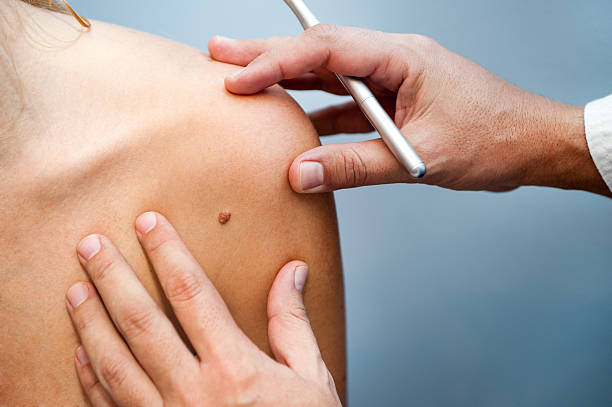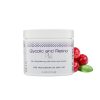In the world of skincare, understanding your skin is the key to achieving a healthy and radiant complexion. Skin analysis, a process that involves evaluating the condition and characteristics of your skin, provides valuable insights that guide your skincare routine.

What is a Skin Analysis?
A skin analysis is a process used to assess the condition and characteristics of the skin. It involves evaluating factors such as texture, tone, hydration, and any specific concerns to determine the most suitable skincare regimen.
Why is Skin Analysis Important?
Skin analysis serves as a roadmap for crafting an effective skincare routine tailored to your skin’s unique needs. By identifying concerns such as dehydration, sensitivity, or uneven texture, you can target specific issues and choose products that truly work for you.
How is Skin Analysis Done?
Skin analysis is typically done through visual observation, specialized tools, and questionnaires. A skincare professional examines the skin’s appearance, uses magnification devices, and asks about lifestyle factors to tailor recommendations.
How Can I Identify My Skin Type?
Identifying your skin type involves observing how your skin behaves throughout the day. Common types include normal, dry, oily, and combination. Factors like oiliness, dryness, and sensitivity help determine your specific skin type.
What are the Four Steps in Skin Analysis?
- Visual Assessment: Examine the skin’s surface for issues like blemishes, pigmentation, and texture.
- Texture Analysis: Assess skin texture using magnification tools to detect fine lines, pores, and irregularities.
- Hydration Check: Evaluate skin moisture levels to determine hydration needs.
- Client Consultation: Discuss skincare habits, concerns, and goals to customize a suitable skincare routine.

What are the 2 Main Types of Skin?
- Oily Skin: Characterized by excess oil production, leading to a shiny complexion and potential acne issues.
- Dry Skin: Lacks sufficient moisture, often resulting in rough texture, flakiness, and a tight feeling.
The Science Behind Skin Analysis
Skin analysis is grounded in dermatology and cosmetology. It combines the knowledge of skin structure, functions, and common issues to create a comprehensive view of your skin’s health. This knowledge empowers skincare professionals to make informed recommendations.
Methods of Skin Analysis
Visual Inspection
Visual inspection involves a close examination of the skin’s surface using natural light. Skincare experts assess factors such as pigmentation, acne, and fine lines, gaining insights into the skin’s current state.
Dermoscopy
Dermoscopy employs a magnifying device to visualize the skin’s deeper layers. This technique is often used to evaluate moles and skin lesions for signs of potential malignancy.
Imaging Devices
Advanced imaging devices use technology like UV light and infrared to reveal underlying skin conditions. These devices capture details that might not be visible to the naked eye, aiding in accurate analysis.
Understanding Different Skin Types
Normal Skin
Normal skin is well-balanced, neither too oily nor too dry. It has small pores, good elasticity, and a smooth texture.
Oily Skin
Oily skin tends to produce excess sebum, leading to a shiny complexion and larger pores. Acne and blackheads are common concerns.
Dry Skin
Dry skin lacks moisture and may appear rough or flaky. It can feel tight and is prone to irritation and fine lines.
Combination Skin
Combination skin exhibits characteristics of multiple types, usually an oily T-zone (forehead, nose, and chin) and drier cheeks.
Sensitive Skin
Sensitive skin is prone to reactions like redness, itching, or burning. It requires gentle, hypoallergenic products.
Benefits of Professional Skin Analysis
Professional skin analysis offers a thorough and accurate evaluation, guiding the selection of appropriate treatments and products. Skincare experts consider your skin’s history, current concerns, and future goals.
DIY Skin Analysis at Home
Skin Type Test
Perform a simple test to determine your skin type. Cleanse your face, wait an hour, then observe how your skin feels. Oily patches indicate combination or oily skin, while tightness suggests dry skin.
Pore Size Assessment
Examine your pores in a well-lit area. Larger pores are common in oily skin, while smaller pores are typical for drier skin.
Skin Tone Analysis
Check your skin undertone by looking at the veins on your wrist. Green veins suggest warm undertones, while blue veins indicate cool undertones.
Skin Texture Evaluation
Gently run your fingers over your face to assess texture. Roughness or flakiness may indicate dry skin, while excessive oiliness suggests oily skin.

Customizing Skincare Regimens Based on Analysis
Tailoring your skincare routine to your skin analysis results can lead to remarkable improvements. Use products targeting your specific concerns, such as hydrating serums for dry skin or oil-free moisturizers for oily skin.
Future Trends in Skin Analysis
The field of skin analysis is advancing rapidly. Expect more personalized solutions, incorporating factors like genetics and lifestyle to create even more effective skincare strategies.
The Role of Technology in Skin Analysis
Cutting-edge technologies like AI and machine learning are being integrated into skin analysis tools. These technologies provide precise and data-driven insights, revolutionizing the way we understand our skin.
Conclusion
In the journey to healthier skin, thorough analysis paves the way. By understanding your skin’s unique characteristics and needs, you can make informed choices that lead to a radiant and confident you.
 5 6 1 . 8 1 0 . 0 5 5 5
5 6 1 . 8 1 0 . 0 5 5 5 







